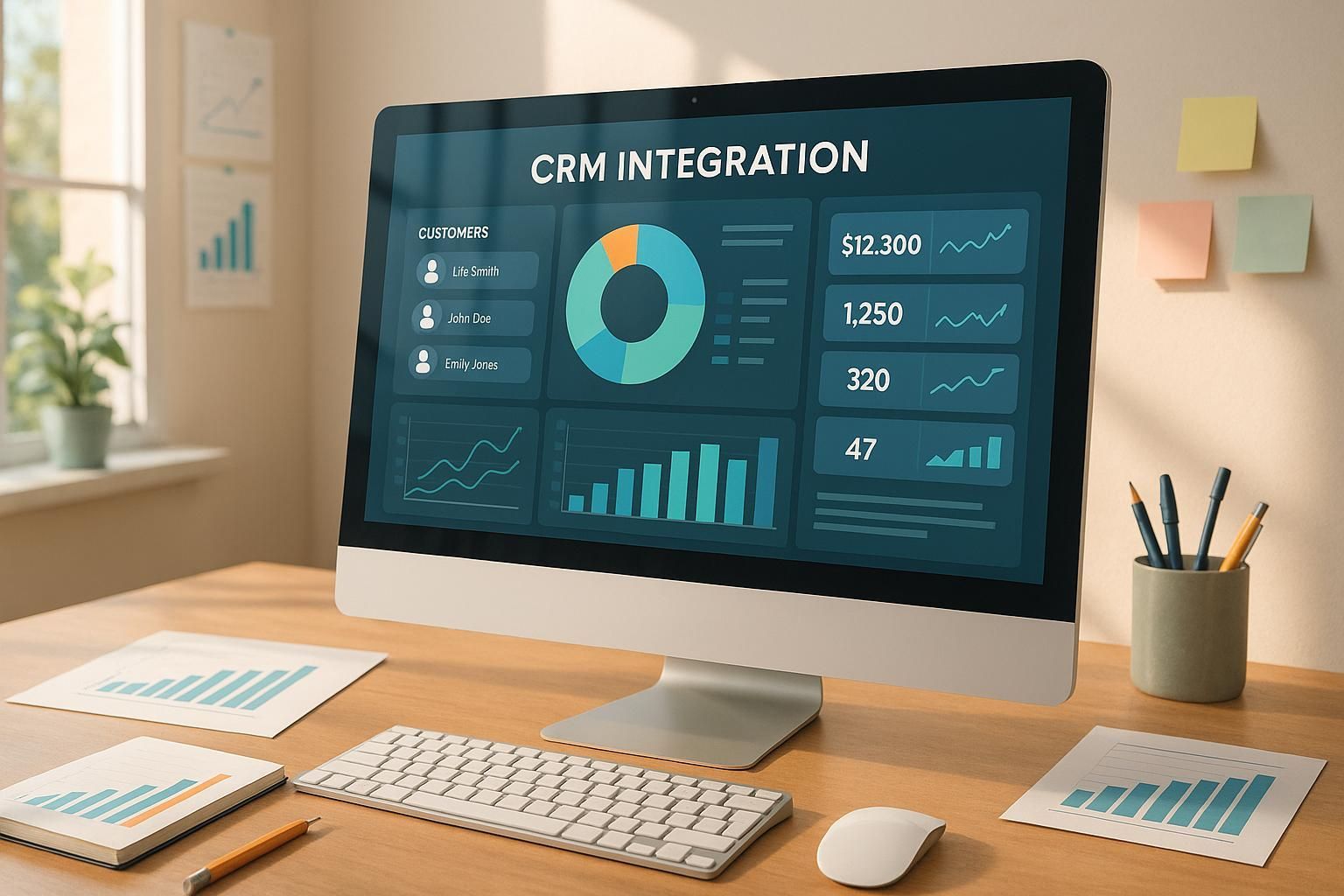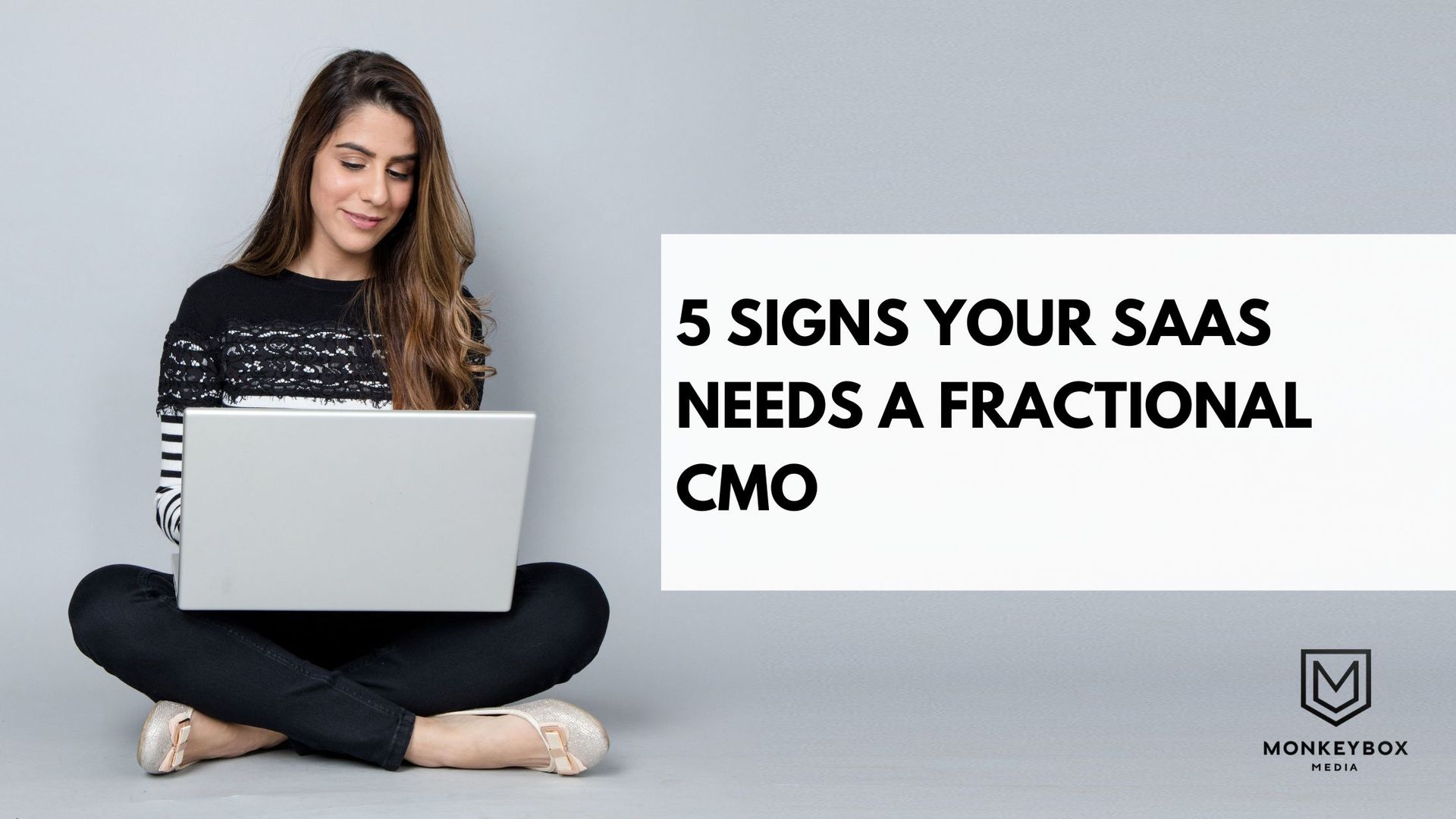Ultimate Guide to Multi-Channel Campaign Execution
SaaS buyers don’t stick to one platform - they explore LinkedIn, blogs, webinars, and reviews before making decisions. That’s why multi-channel campaigns are essential. They unify your marketing efforts, delivering consistent messages tailored to each platform. Here’s why this matters:
- 300% ROI boost : Brands using 4+ channels outperform those using 1-2.
- 79% of customers expect consistent experiences across platforms.
- SaaS purchases often involve 62 touchpoints - fragmented efforts slow decisions.
To succeed, focus on these key steps:
- Plan Goals and KPIs : Define metrics like MRR, CAC, and conversion rates.
- Choose the Right Channels : Prioritize platforms where your audience spends time.
- Tailor Messaging : Align content to customer stages - awareness, consideration, decision.
- Leverage Tools : Use automation for efficiency and personalization.
- Measure Results : Track CAC, retention, and channel performance for optimization.
Multi-channel campaigns shorten sales cycles, strengthen customer relationships, and keep your brand top-of-mind. Start small, measure performance, and refine your approach for growth.
Planning and Channel Selection
Creating a successful multi-channel campaign begins with thoughtful planning. Without clear objectives and a well-chosen mix of channels, your efforts and budget can quickly go to waste. Let’s dive into the steps and strategies you’ll need to craft a campaign that connects with your audience.
Setting Campaign Goals and KPIs
Before launching any campaign, you need to know what success looks like. Organizations that establish key performance indicators (KPIs) are 41% more likely to achieve their strategic goals compared to those that don’t. But this doesn’t mean tracking everything - focus on the metrics that matter most for your SaaS business.
For SaaS companies, your North Star metric might be something like MRR (Monthly Recurring Revenue) or ARR (Annual Recurring Revenue). From there, break it down into actionable KPIs such as MQLs (Marketing Qualified Leads), CAC (Customer Acquisition Cost), and conversion rates. As Jake Stainer explains:
"We don't want to be chasing vanity metrics that will be of little or no use to us further down the line. We want to focus on improving our products, lifting our acquisition and retention, and ultimately our bottom-line ROI."
Companies that use data-driven decision-making see a 5%–6% boost in productivity and stronger accountability. In fact, 82% of companies agree that measurable KPIs add real value . When your team knows exactly what they’re aiming for, accountability improves - 68% of high-performing employees report greater accountability when KPIs are clear and shared .
To ensure accuracy, verify your data sources and use advanced tools like Google Analytics , social media dashboards, or custom CMS integrations. Consolidating data from multiple channels into a unified view helps you understand how each platform contributes to your goals.
Once your goals are clearly defined, you’re ready to select the channels that will best connect with your audience.
Choosing the Right Channels for SaaS
Not every channel will be a fit for your business, so it’s crucial to understand where your target audience spends their time and how they prefer to engage with content. As Sridhar Ramanathan, Co-founder of Aventi Group , puts it:
"Marketing channels is a different animal. And I like to start with the same philosophy, really understanding your target decision-maker."
For B2B SaaS, decision-makers often frequent LinkedIn groups, industry events, product review sites like G2 or Capterra , trade publications, and analyst forums. 60% of the buying process happens before a prospect ever talks to a salesperson , so being present in these research-focused spaces is critical.
When selecting your channel mix, consider these factors:
- Audience behavior and preferences : Analyze your website and social media analytics to identify platforms that drive the most qualified traffic. Build detailed buyer personas to understand where and how your audience consumes content.
- Budget and ROI potential : Some channels, like social media and email, are cost-effective with precise targeting, while others, like paid ads and events, require more investment but can yield quicker results. Focus on channels that offer the best return for your budget.
- Brand alignment and competition : Not all channels will fit your brand’s tone or style. Look at where your competitors are investing, but also identify gaps where you can stand out.
It’s better to excel on 3-4 channels than to spread yourself too thin. Test different combinations with A/B testing, monitor performance against your KPIs, and refine your approach by doubling down on what works.
Matching Campaigns to Customer Stages
A strong multi-channel strategy adapts your messaging to align with each stage of the customer journey. Tailoring content to your audience’s current needs ensures a more effective and engaging experience.
- Awareness stage : At this point, prospects are just starting to recognize their problem. Educational content like LinkedIn posts, blog articles, and webinars can help them better understand their challenges and potential solutions. Keep the focus on being helpful, not sales-driven.
- Consideration stage : Here, prospects are evaluating solutions. Use case studies, product comparisons, and demo videos to showcase your value. Email nurture campaigns and retargeting ads can guide them through this phase, keeping your solution top-of-mind. Multi-channel marketing strengthens brand awareness and shortens sales cycles .
- Decision stage : Now it’s time for conversion-focused content. Offer free trials, personalized demos, and direct sales outreach to address objections and highlight your differentiators. Tools like in-app messaging and targeted emails can help close the deal.
For example, Pluto Card achieved a 200% increase in their lead-to-opportunity conversion rate, jumping from 11% to 33%, by tailoring their messaging to different stages of the buyer journey. Over six months, they worked with TripleDart Digital to optimize landing pages, create audience-specific paid ads, and focus on high-intent keywords for search campaigns.
Consistency in your core message is key, but adapt the format and depth of your content for each channel and stage. Marketing automation tools can track interactions across platforms, allowing you to adjust messaging in real-time. By creating a seamless experience, you can guide prospects naturally through the sales funnel, no matter how they choose to engage. These foundational steps set the stage for the execution strategies covered in the next section.
Campaign Development and Management
Integrated campaigns thrive on consistent messaging, effective tools, and strong leadership. When these elements align, they transform scattered efforts into cohesive strategies that amplify results.
Creating Consistent Messaging Across Channels
Consistent messaging ensures a unified brand voice, core values, and visual identity across all marketing efforts . For SaaS companies managing campaigns across multiple platforms, this approach reinforces trust and keeps the value proposition clear at every interaction.
In fact, consistent branding can increase revenue by 23%. Even something as simple as maintaining color consistency can boost brand recognition by up to 80% . The trick is tailoring your message to suit each platform while staying true to your brand’s essence. For instance, a LinkedIn post might lean professional, while a Twitter update could take a more casual tone. What matters is that the brand's personality and core message remain intact.
"Brand consistency is the thread that weaves together every interaction a customer has with your company".
Consistency goes beyond your logo. It includes tone of voice, unique selling points, values, design elements, and key messages. To achieve this, start by creating a detailed brand identity document that outlines these elements. Pair it with a style guide covering visual details (like colors, fonts, and logo usage) and verbal components (such as tone, taglines, and key phrases).
To make this process seamless, use digital asset management (DAM) systems to store and organize brand materials in one place. Implement approval workflows to ensure all communications align with your guidelines, and schedule regular cross-team meetings to keep everyone on the same page. Monthly brand audits can help catch inconsistencies early, while clear governance frameworks ensure smooth execution.
Once your messaging is aligned, the next step is integrating automation tools to streamline your campaigns.
Using Automation and Integration Tools
Marketing automation tools simplify multi-channel campaigns by managing efforts across platforms like email, social media, websites, and SMS . These tools not only save time but also improve performance. For example, marketers report saving 25 hours per week with automation, and 78% of companies are already using these tools .
The impact goes beyond efficiency. Multi-channel customers tend to spend three to four times more than single-channel shoppers. And with 84% of customers preferring personalized experiences , automation enables companies to deliver tailored interactions at scale.
Key features to look for include centralized dashboards for campaign management, customer segmentation tools for targeting specific groups, and personalization engines powered by machine learning. Workflow automation can trigger communications based on specific actions, while behavioral tracking tools map the customer journey and highlight areas for improvement.
Consider the results Domino's achieved in March 2023. By investing in technology to clean up and analyze data, they identified eight customer segments and tailored their campaigns accordingly. This allowed them to reduce customer acquisition costs by 65% and increase Google ad returns by a staggering 700%.
When choosing tools, prioritize platforms with customizable dashboards, user-friendly interfaces, and strong data protection. The right tools, paired with strategic leadership, can take your campaigns to the next level.
Fractional Leadership for Campaign Success
With consistent messaging and automation in place, experienced leadership ensures campaigns deliver maximum impact. For many SaaS companies, hiring a full-time CMO isn't always feasible. A full-time CMO can cost over $250,000 annually , making fractional leadership a cost-effective alternative.
Fractional CMOs typically cost 40% less than their full-time counterparts , with monthly rates ranging from $5,000 to $20,000 . Hourly retainers usually fall between $150 and $350, while package tiers can range from $6,500/month for advisory services to $45,000/month for full-service solutions.
What makes fractional leaders valuable isn’t just the cost savings - they bring diverse industry experience and fresh perspectives. They can quickly identify gaps, refine strategies, and implement changes that drive growth. The demand for fractional roles has surged, increasing 57% between 2020 and 2022.
Fractional CMOs excel at aligning marketing strategies with sales and finance goals. They use metrics to guide decisions, build stronger teams, and provide clarity on long-term objectives. This flexible approach offers strategic expertise without the commitment of a full-time hire.
For example, Monkeybox Media offers fractional CMO services tailored to SaaS companies , helping them scale operations, streamline systems, and modernize tech stacks (https://monkeybox.media). Their expertise spans marketing strategy, team alignment, and campaign execution, making them a valuable resource for growing businesses.
To get the most out of fractional leadership, set clear KPIs and deliverables, define the scope of work, and maintain open communication with regular check-ins. Treat fractional leaders as integral team members, and be receptive to their insights and recommendations. Trust, transparency, and collaboration are key to achieving the best results.
Measurement, Optimization, and Reporting
Turning campaign data into actionable insights is the key to driving growth. Without proper tracking and analysis, even the most well-crafted multi-channel strategies can fall short - missing opportunities or wasting resources on channels that don't perform. This phase builds on your execution strategy by translating raw data into clear, actionable steps.
Key Metrics for Multi-Channel Performance
Metrics are the bridge between marketing and sales, helping SaaS teams make better decisions and achieve sustainable growth . The challenge isn't collecting data - it's knowing which metrics truly matter.
To align with long-term growth goals, track performance across all customer touchpoints. This is especially critical in B2B SaaS, where buying cycles are longer and involve multiple interactions. Start with the basics that directly impact revenue:
- Customer Acquisition Cost (CAC): Over the past five years, CAC has risen by 55%. A healthy CLTV:CAC ratio - ideally between 3:1 and 5:1 - is a strong indicator of sustainable growth. If your ratio is below 3:1, it's time to rethink acquisition costs or retention strategies.
- Channel Comparisons: On average, B2B SaaS companies spend $702 per customer . Comparing CAC across channels can reveal which ones offer the best returns. For example, email marketing delivers an ROI of 42:1 , while Google Ads typically return $8 for every $1 spent .
- Conversion Rates: B2B SaaS websites usually convert between 2% and 10% . Tracking these rates by channel helps identify where your most qualified traffic is coming from.
- Retention Metrics: Retention is just as important as acquisition. Boosting retention by as little as 5% can increase profits by 25–95% . A churn rate under 5% annually is considered strong for B2B SaaS. Monitoring churn by channel can help pinpoint which sources bring the most loyal customers.
"We keep a close eye on the number of signups and then conversions to paying customers using our first-touch attribution model - especially for content/SEO initiatives." - Tomas Prochazka, Content Marketing Manager at Usersnap
"There are two metrics we track obsessively: our CLTV:CAC to show profitable growth and activations to show product sustainability." - Hala Ali, Head Marketing & Growth at Oxygen Health
Tracking trends over weeks and months often provides more clarity than focusing on daily fluctuations , especially in B2B campaigns with longer sales cycles.
Using Data to Improve Campaigns
Data analytics allows SaaS marketers to go beyond surface-level metrics and develop strategies that deliver results . By connecting data points, you can refine cross-channel performance.
- Multi-Touch Attribution (MTA): MTA reveals how different channels and campaigns contribute to conversions. Instead of giving all the credit to the last click, MTA maps the entire customer journey, helping you allocate budgets and fine-tune messaging.
- Behavior Analysis: Tools like heatmaps, scroll depth tracking, and conversion funnels show how users interact with your site. For instance, if users rarely scroll past key content, it may be time to reposition your value propositions.
- Channel Integration: Combining insights from email, social media, webinars, and paid ads can uncover patterns often missed when channels are analyzed separately. Companies that integrate these insights are six times more likely to see year-over-year profitability .
A great example comes from TripleDart Digital, which worked with Pluto Card to boost their lead-to-opportunity conversion rate from 11% to 33% in just six months . They achieved this by optimizing conversion paths, improving landing page forms, tailoring messaging for each channel, and focusing on high-intent keywords in paid search.
- Intent Data for ABM: Use intent data to identify accounts showing buying signals across multiple channels. This helps prioritize outreach and tailor messaging for prospects already in the market.
- A/B Testing: Test everything - messaging, visuals, and targeting - on each channel. For B2B campaigns, allow 2–4 weeks for tests to reach statistical significance, given the longer decision-making cycles.
"The instinct is to go big, but the companies seeing the best results are doing the opposite – starting small, getting the messaging perfect, then scaling gradually." - Jason Lyman, CMO at Customer.io
Surveys can also complement behavioral data. Asking customers which channels influenced their decisions or what messaging resonated most provides valuable qualitative insights to explain your quantitative findings.
Building Unified Reporting Dashboards
Unified dashboards simplify the complexity of multi-channel campaigns, offering a clear overview of performance and opportunities. The key is to create dashboards that inform decisions, not overwhelm with data.
- Know Your Audience: Tailor dashboards to the needs of different stakeholders. Executives need high-level metrics tied to revenue, while marketing managers require detailed channel performance data.
- Align Metrics with Goals: Dashboards should reflect strategic objectives, like entering new markets or improving customer loyalty. For example, if market expansion is a focus, include metrics like geographic conversion rates.
- Focus on Clarity: Use simple layouts, group related metrics, and maintain consistent color coding. Avoid overcrowding; multiple focused views often work better than one overly complex screen.
"When it comes to cross-channel reporting, clarity is everything. We always start with an easy-to-read summary so clients can quickly see how their marketing is performing, then we dive into the details by channel." - Aaron White, CEO, Outbound
"I keep reports clear and actionable, using visualizations, trend lines, and simplified breakdowns instead of raw numbers. I also highlight key takeaways upfront so clients don't have to dig through data to find the insights that matter." - Camden Olivero, CEO, Niche and Needle
Automate reports to match stakeholder preferences. Some may prefer live dashboards, while others might opt for weekly or monthly PDF summaries. Always solicit feedback to refine dashboard functionality and ensure it evolves with your business goals.
Consistency is crucial - use the same format, structure, and terminology across all reports. This makes it easier for stakeholders to locate key information and compare performance over time. Dashboards should not just display data but also include context and commentary, helping teams understand the implications and decide on the next steps.
sbb-itb-6e0f5a2
Common Challenges and Solutions
Even the best-laid plans for multi-channel campaigns can hit roadblocks when it comes to execution. Issues like fragmented data, siloed teams, and outdated systems can derail efforts, leaving marketing, sales, and support teams disconnected.
Fixing Fragmented Data and Team Silos
Data fragmentation happens when information is scattered across multiple tools, systems, and storage locations . For SaaS teams managing multi-channel campaigns, this often means critical insights are stuck in silos, making it nearly impossible to get a clear picture of performance.
Fragmentation is fueled by tool overload, manual data processes, and legacy systems that fail to integrate marketing, sales, and support data. So, what’s the fix?
- Choose platforms with unified data and seamless integrations . Instead of juggling disconnected tools that require manual exports, invest in software that syncs data automatically. While this might mean spending a bit more upfront, the time savings and better decision-making are worth it.
- Ensure data quality with standardized practices . Use clear naming conventions, consistent event tracking, and detailed documentation. When everyone follows the same rules for tagging campaigns, classifying leads, and defining metrics, the data becomes actionable.
- Encourage data sharing through collaboration rituals . Regular cross-team meetings - where marketing, sales, and customer success review shared dashboards - can break down silos and ensure everyone is on the same page.
For larger organizations, consolidating data through tools like data lakes or warehouses can help unify information from multiple sources. Additionally, migrating legacy systems to cloud-based solutions enhances accessibility and integration.
Here’s a real-world example: Stibo Systems helped a leading fashion retailer integrate online and in-store data, leading to a 20% increase in customer retention and a 15% boost in operational efficiency . Similarly, a global electronics company achieved real-time inventory synchronization, cutting stockouts by 30% .
Once your data is unified, the next hurdle is ensuring your messaging stays consistent across all channels.
Keeping Messaging Consistent Across Channels
A cohesive multi-channel strategy relies on consistent messaging that reinforces your brand at every customer interaction. Yet, 58% of customers report being frustrated by inconsistent experiences across channels . Balancing consistency with platform-specific requirements can be tricky.
Start by creating a comprehensive brand identity document that outlines your brand’s personality, tone, and key messages. This isn’t just a marketing exercise - it’s the backbone of your strategy, ensuring your LinkedIn ads, email campaigns, and webinars all work together. Even something as simple as consistent color usage can boost brand recognition by up to 80% .
To keep your messaging aligned:
- Develop a messaging matrix . This should include both visual (colors, fonts, logo usage) and verbal (tone, key phrases, taglines) elements. The matrix ensures your core message adapts to each platform without losing its essence. For instance, your email campaigns might dive into details, while social media posts highlight key benefits.
- Use integrated CRM platforms . A unified CRM allows your team to track customer interactions across email, social media, and direct outreach, ensuring consistent messaging at every touchpoint. Flywheel , a WordPress hosting company, demonstrates this perfectly: customers can start a support query via live chat and continue it through email, with all interactions seamlessly tracked.
- Train your team regularly . When campaigns or messaging evolve, ensure every team member understands the updates and how they apply to their specific responsibilities.
"Consistent messaging builds brand recognition, increases customer trust, and improves overall marketing effectiveness by delivering a clear, unified message to your audience." - Optimizely
Strong leadership is essential to tie all these efforts together, ensuring campaigns are executed smoothly.
How Leadership Support Improves Campaigns
Fragmented data and inconsistent messaging often stem from a lack of cohesive leadership. Effective leaders see the big picture and align teams to work toward shared goals.
Many SaaS companies struggle because they don’t have dedicated marketing operations expertise. Marketing operations isn’t a side task - it’s a full-time role . Without someone to connect the dots, teams risk working in silos, and campaigns lose their impact.
"The point is always: define what you need to achieve and then structure your team around it. Forget about how other companies structure their teams." - Adelina Peltea, CMO @ Usersentrics
Here’s how strong leadership makes a difference:
- Host joint sales and marketing meetings . Regular discussions about priorities, challenges, and opportunities help align both teams. These meetings should cover pipeline reviews, campaign performance, and process improvements.
- Set shared KPIs . Agree on metrics like marketing qualified leads (MQLs), conversion rates, and customer acquisition costs. Shared goals keep teams accountable and focused.
- Provide cross-discipline training . When marketing understands sales objections and sales appreciates marketing’s lead-nurturing process, collaboration improves, and campaigns run more effectively.
Pluto Card is a great example. Without an in-house marketing team, they partnered with TripleDart Digital for strategic leadership. The external team optimized conversion paths, revamped landing pages, tailored messaging, and focused on high-intent keywords. The result? Dramatically improved campaign performance, thanks to coordinated leadership.
Clearly defining roles is another critical step. When every team member knows their responsibilities and how they contribute to the overall strategy, confusion is minimized, and campaigns run smoothly.
Key Takeaways for Multi-Channel Success
Executing a successful multi-channel strategy requires a thoughtful, data-driven approach. SaaS buyers are in control of their journey, and to engage them effectively, you need to meet them where they are - across multiple platforms. By focusing on four essential pillars, you can create campaigns that deliver meaningful results.
Main Points Summary
Strategic planning and channel selection are the foundation of any effective multi-channel strategy. Instead of trying to be everywhere, focus on 2-3 primary marketing channels that align with your audience, plus one experimental channel to explore new opportunities. This approach helps you refine your efforts and achieve consistent results without overextending your resources.
Unified messaging across channels ensures your brand maintains a consistent voice. Whether it's LinkedIn ads, email campaigns, or webinars, tailoring your message to fit each platform while reinforcing the same core ideas creates a seamless experience. This matters because 79% of customers expect consistency across all touchpoints , and businesses that deliver on this see a 23% boost in revenue .
Data-driven measurement and optimization are what separate standout campaigns from the rest. Keep an eye on metrics like Customer Acquisition Cost (CAC), Lifetime Value (LTV), and conversion rates for each channel. Tools like UTM tracking and A/B testing allow you to pinpoint what's working and refine your approach. Companies that rely on data insights are six times more likely to achieve year-over-year profitability .
Strong leadership support is the glue that holds everything together. Having someone who can see the big picture and align teams around shared goals is critical. This is where fractional leadership can make a difference, providing the guidance needed to execute effectively and drive results.
By focusing on these pillars, you’ll be ready to take action and see measurable success.
Next Steps for SaaS Founders
Here’s how to get started with a multi-channel strategy:
- Set clear objectives and KPIs. Define measurable goals for each channel, whether it’s growing brand awareness, generating leads, or driving conversions. Understand your Ideal Customer Profile (ICP) and map out their journey to find the best platforms for reaching them at different stages.
- Invest in integrated marketing tools. Choose CRM and email automation platforms that work together to provide a complete view of customer interactions. This will help you deliver personalized experiences at scale and avoid data silos that slow down progress.
- Start with high-ROI channels. Email marketing, with its ROI of 42:1, is a great starting point for most SaaS companies. Pair this with SEO-driven content marketing, such as blog posts and case studies, to build organic growth. Once these are running smoothly, consider adding paid ads or account-based marketing to accelerate your efforts.
- Test, measure, and refine. Use analytics to monitor performance and don’t hesitate to shift resources to your best-performing channels. Document your findings to improve future campaigns and keep your strategy evolving.
For many SaaS founders, limited time and expertise make multi-channel marketing a challenge. However, when done right, it can boost brand visibility, shorten sales cycles, and improve customer retention. Fractional leadership can help bridge the gap, offering strategic guidance without the need for full-time hires.
Monkeybox Media specializes in providing this kind of support, helping SaaS companies develop multi-channel strategies, align teams, and optimize performance. With the right leadership and execution, you can avoid common missteps and achieve faster results.
The path to multi-channel success is clear - what’s left is to execute with focus and precision. Let these insights guide your next steps, and you’ll be well on your way to building campaigns that truly resonate.
FAQs
How can SaaS businesses identify the best channels for their multi-channel campaigns?
To identify the best channels for your multi-channel campaigns, the first step is to set clear key performance indicators (KPIs) that tie directly to your business objectives. Keep a close eye on metrics such as engagement levels, conversion rates, and customer acquisition costs to evaluate each channel's performance. By understanding where your audience spends their time and how they interact with your brand, you can zero in on the platforms that yield the strongest results.
It’s also important to experiment with various platforms and adjust your approach based on the data you gather. This way, you can concentrate your efforts on the channels that genuinely drive growth and deliver a solid return on investment for your SaaS business.
How does automation simplify multi-channel marketing campaigns, and what tools can help?
How Automation Transforms Multi-Channel Marketing Campaigns
Automation has revolutionized the way businesses manage multi-channel marketing campaigns. By taking over repetitive tasks, it ensures consistent messaging across various platforms and provides insights into customer behavior to fine-tune performance. This frees up marketing teams to focus on big-picture strategies and creative initiatives, all while boosting overall efficiency.
Some of the top tools for automating multi-channel campaigns include HubSpot Marketing Hub , Salesforce Marketing Cloud , Zoho Marketing Plus , and ActiveCampaign . These platforms come packed with features like email marketing, audience segmentation, and performance tracking - making them powerful allies for SaaS businesses looking to scale efficiently.
What are the advantages of using fractional leadership for a SaaS company’s marketing strategy instead of hiring a full-time CMO?
Fractional leadership provides SaaS companies with access to top-tier marketing expertise without the expense or long-term commitment of hiring a full-time CMO. It’s a smart way for businesses to roll out strategies quickly, adjust to shifting market conditions, and tackle specific objectives or challenges as they grow.
This model works particularly well for expanding companies that require agility and focused guidance to align their teams, refine processes, and run impactful marketing campaigns - all while keeping costs under control.




